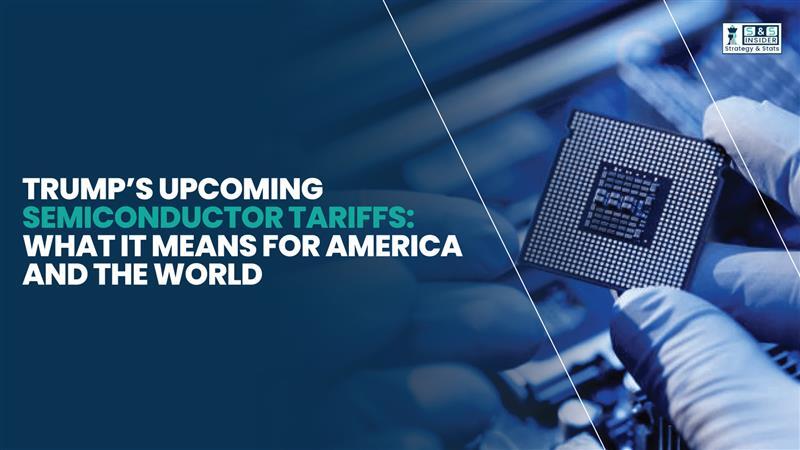
In recent days, President Donald Trump made headlines again, this time with a bold announcement that the U.S. will soon unveil new tariffs on imported semiconductors. While the details remain under wraps, this move signals a significant shift in America’s trade and technology strategy, which is one that could ripple across industries, economies, and everyday lives.
Why Semiconductors Matter More Than Ever?
Semiconductors are small and intricate chips, which power everything from laptops and smartphones to medical devices, cars, and also military equipment. Think of them as the “brains” behind modern technology. The global demand for these chips has skyrocketed in recent years, especially with the rise of artificial intelligence, 5G networks, and electric vehicles.
However, the semiconductor supply chain is complex and heavily reliant on a handful of countries, especially in Asia. This dependency has also raised alarms in Washington, amid the surging geopolitical tensions and recent chip shortages, which has disrupted industries in the world.
Tariff Announcement: What We Know So Far
The announcement from Trump comes alongside the plans for imposing a 50% tariff on copper imports, which is another critical material for defense and technology. While the exact tariff rate on semiconductors has not been revealed, and the experts are also speculating that it could be substantial, aiming at encouraging domestic chip manufacturing and decreasing reliance on foreign suppliers.
This is not just about economics, and it is about national security. The U.S. government views control over semiconductor production as vital to maintaining technological leadership and protecting sensitive defense systems.
What This Means for Businesses and Consumers?
For American manufacturers, the tariffs could be a double-edged sword. Firstly, they might spur investment in local chip fabrication plants, creating jobs and fostering innovation. Secondly, the increased costs of imported chips could raise prices for electronics and slow down production timelines.
Consumers might notice these effects in the form of pricier gadgets or delays in product availability. For long-term goals, a stronger domestic semiconductor industry could lead to more resilient supply chains and technological breakthroughs made right here in the U.S.
Global Reactions and Trade Dynamics:
The announcement is likely to stir reactions from trade partners, especially countries that are major chip producers. Already, trade tensions have been high, with tariffs on Chinese goods and ongoing negotiations with the European Union. Adding semiconductor tariffs to the mix could complicate diplomatic relations and prompt retaliatory measures.
However, it also sends a clear message, saying that the U.S. is serious about safeguarding its technological future and is willing to take bold steps to do so.
Balancing Protection and Progress in the Future:
Tariffs are a powerful but blunt tool. While they can protect domestic industries, they also risk disrupting global cooperation and innovation. The challenge for policymakers will be to strike a balance, encouraging homegrown semiconductor production without stifling the collaborative spirit that drives technological advancement.
For everyday Americans, this development is a reminder of how interconnected our world is and how critical technology has become in our daily lives. As the U.S. moves forward with these tariffs, the hope is that it will lead to a stronger, more secure tech ecosystem that benefits everyone, from manufacturers to consumers.
In conclusion, Trump’s announcement about semiconductor tariffs is more than just a trade headline, and it is a pivotal moment in America’s quest to reclaim technological leadership. While the road ahead may be complex, the focus on semiconductors underscores their importance in shaping the future of innovation, security, and economic growth.
Source: MSN